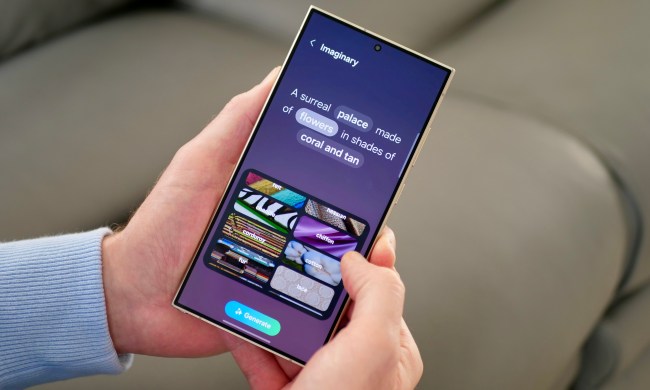For many traditionalists, the very idea of carrying our arsenal of electronic gadgetry into the wilderness is anathema. However, much as I myself may enjoy the simplicity of the unfiltered outdoors experience, there is much fun and utility to be found in the cutting edge of technology.
To discover just how far I could take technology in the backcountry, I set off on an expedition. I went on a backpacking trip armed with a Galaxy S22 Ultra, multiple cameras, the Spot X satellite messenger, and more. With enough gizmos in my pack to make James Bond jealous, I hit the trail — and documented what happened.
The silicon heart of hiking
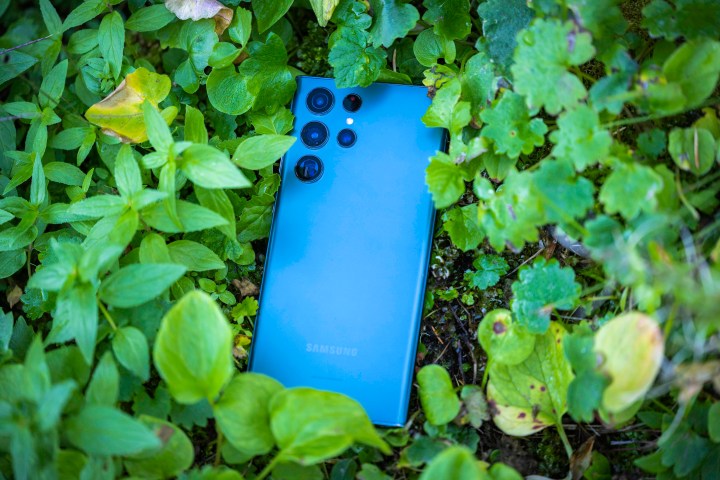
At the core of my outdoor tech toolkit was my smartphone, the Samsung Galaxy S22 Ultra. I consider this to be the best phone for the task, as it has a fully loaded camera array with ultrawide, wide, telephoto, and super-telephoto lenses. There’s also a particularly bright and expansive screen, plus a built-in stylus, with those two factors being particularly well-suited to route finding on digital maps. In the backcountry, the advantages of a high-end smartphone are more prominent than in less intense situations, particularly if you are relying on it for tasks such as navigation.
Laying the groundwork
Before any major trip, it’s important to plan your route well ahead of time. Most of America’s backcountry areas are located on land managed by federal agencies, so the top two apps for researching your destination and reserving necessary permits are the National Park Service app and the Recreation.gov app.
On the road
Despite the maze of old logging roads I had to navigate, Google Maps worked splendidly, though after driving over 12 miles of washboard gravel spotted with sneaky potholes, I’m not sure my dusty, beaten-up, old Subaru Forester will ever be the same again. We arrived a bit late due to slow traffic and the poor condition of the road. I recommend adding 20% to whatever Google estimates the travel time to be.
Cameras
Photography is a big part of the experience of hiking for me, so I carry an obscene amount of extra weight in terms of camera gear into the backcountry. I rarely travel with fewer than two large cameras, as well as my phone. For this adventure, I packed my enormous, chunky Nikon Z9 with the Nikkor Z 24-70mm f/4 S lens, my slightly smaller Nikon Z6 with the Nikkor Z 14-24mm f/2.8 S lens, the Insta360 One RS 1-inch 360 edition, and GoPro Hero 10 Black Creator Edition. I also packed my trusty mini tripod, the Manfrotto Pixi Evo 2. While it doesn’t offer a ton of elevation, it is capable of handling even my hefty Z9.
The GoPro Hero 10 Black Creator Edition was the camera I used for recording vlog-style content during the trip. Thanks to the media mod microphone, it can capture decent audio, and the LED light on top helps balance out dark shadows when vlogging in high-contrast environments. The Volta battery grip had enough charge to record several days’ worth of videos, including several long time-lapses.
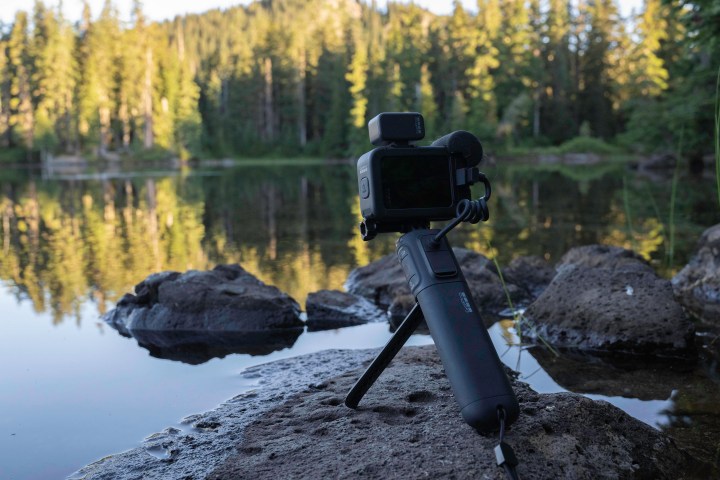
The Z9 produces tremendous high-resolution images, which is ideal for landscape work. Its 4K 120 frames per second (fps) video capture capability, combined with high performance in body image stabilization system (IBIS), enables me to grab smooth, cinematic shots of highlights on the go. I used the 24-70 f/4 lens with the Z9 because it’s a great general-purposes optic that collapses into a compact form factor, and is also reasonably lightweight.
The Z6 is an excellent lowlight camera, and since I picked up the Z9, it almost exclusively functions for capturing beautiful time-lapse videos of stars at night, and as a backup to my Z9 in case something goes wrong.
The Insta360 One RS 1-inch 360 edition also functions as an astrophotography camera, thanks to its amazing Starlapse function. It’s also fantastic for recording while you’re hiking and creating VR videos of your trip. Thanks to its large, 1-inch sensor, it offers the best image quality and lowlight performance of any 360 camera currently available.
Photography planning
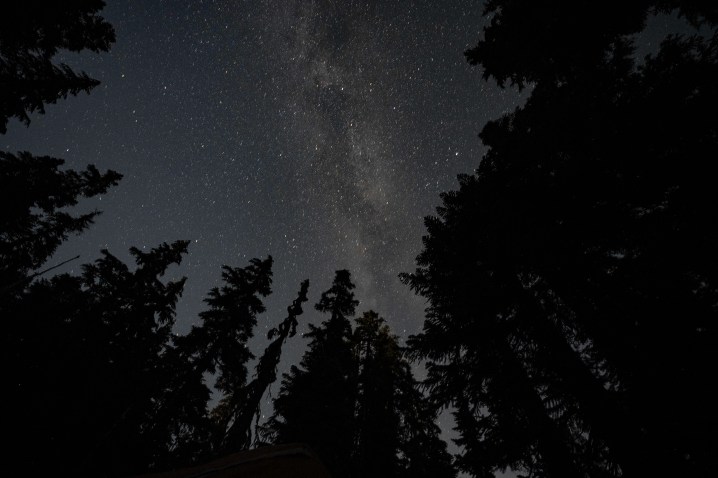
There are some great apps available on iOS and Android to help you take photos in the backcountry. I settled on PhotoPills as a great all-in-one solution, and it managed to do everything I needed from such an app and more. My favorite functions of this app are those that show the position of the sun, moon, stars, and other relevant information that affects light and composition at any location. The augmented reality feature helps visualize this, including showing the location of meteor showers and the Milky Way, as well as the motion of the stars.
PhotoPills also provides tools to calculate depth of field, exposure, and time-lapse parameters, as well as tutorials in both written and video formats. It’s an excellent companion for any photographer.
Batteries and power
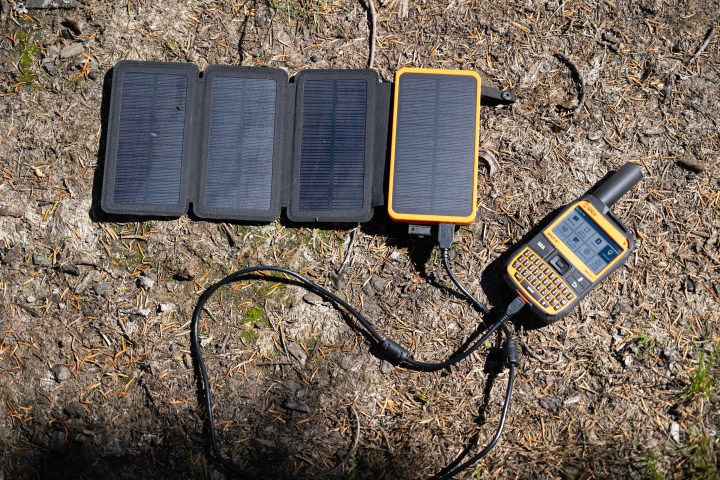
It’s easy to forget how much juice our devices require when we have the opportunity to plug in every evening for a leisurely refill. Once that convenient source of electricity is far behind you on the other side of a mountain range, you quickly realize that your gadgets gobble electricity at an alarming rate, and if you’re planning a multiday journey, you need to pack extra batteries.
A good way to save some weight is to get a backup battery with a built-in solar panel and set it out in the sun when you set up camp. This way, you can harvest those electrons on the spot rather than hauling them up the trail on your back.
Be sure not to repeat the biggest mistake I made in the backcountry, which was to throw my charging cables in at the last minute, only to later realize they were all Micro-USB cords, when most of my devices require USB-C. Considering that I was relying on those devices for numerous functions on the trip, this was a major monkey wrench to throw in my plans. The rest of the trip was spent rationing battery life in my cameras and phone, which turned out to be a severe limitation.
Navigating the backcountry
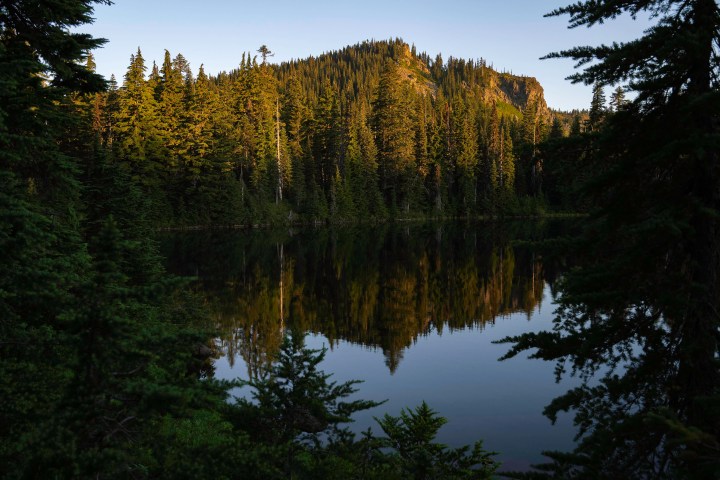
While Google Maps is great for navigating the highways and byways of America, its coverage of hiking trails isn’t reliable for the purposes of route finding in the wilderness. Once you venture off the beaten path, a more robust alternative is necessary. I tried a wide variety of applications to find which offered the best user experience.
Cairn, AllTrails, Avenza, and onX Backcountry are all serviceable, but I eventually settled on Gaia GPS, as I came to prefer its interface. It’s the service I’d recommend. AllTrails is a good alternative if you’re looking more for preplanned trip suggestions, while onX is tailored more to those who are exploring areas where identifying landownership is of paramount importance. I’d recommend AllTrails for people who are new to hiking, while onX would be particularly useful to me in my volunteer work where I seek out and document ancient legacy forests on obscure public lands.
Gaia GPS offers an experience that I found more conducive to custom trip planning in more remote wilderness areas. I particularly appreciated its easy tool for creating custom routes along established trails.
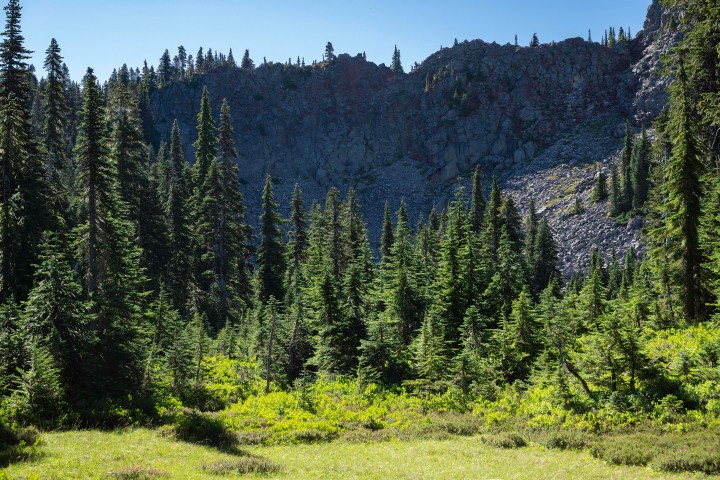
Beyond mapping apps, an excellent tool for visualizing landmarks is PeakFinder, which is an augmented reality app that shows you the names of the various mountains around you. It’s a fun way to identify different peaks and also an excellent route-finding tool for situations where you are dealing with limited visibility. So long as you have a GPS signal, you’ll be able to visualize which direction you should be heading with this app. It’s a tool I’d recommend regardless of whether you’re using a printed or digital map as your primary route-finding method.
I intentionally left home without a paper map, which is something I’ve never done before on a backpacking trip. My goal was to see if traveling with a digital map alone is a good idea. Because of the aforementioned charging cable debacle, I came to sorely miss the reliability of simple laminated paper maps. My careful rationing got me through the three-day trip, and while I was never in any danger of getting seriously lost, it wasn’t a good situation to have put myself in.
Satellite communication
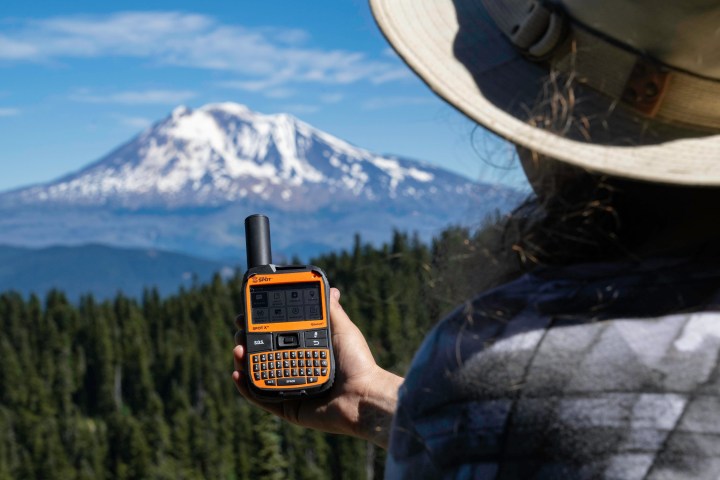
There’s no getting around the fact that hiking in remote locations carries with it a certain amount of risk. Every year, people disappear into the wilderness and are never seen alive again. Admittedly, these unfortunate folks make up a small percentage of the waffle-stomping multitudes, but the dangers are very real. Since rarely will you be able to make a call from the middle of nowhere on a traditional cellular network, for communication from the back of beyond, you should consider investing in a satellite communications device. Anyone with an iPhone 14 already has one in their pocket, thanks to the new Emergency SOS via satellite feature. For everyone else, you’ll need a dedicated piece of hardware.
I chose the Spot X Bluetooth, which enables two-way messaging from just about anywhere. It looks a bit like a BlackBerry with its QWERTY keyboard, but with a low-power LCD screen and a fat, stubby antenna. With it and an accompanying subscription, you can send prewritten messages, as well as custom texts, and in an emergency, an SOS button will summon emergency services. It also allows your friends and loved ones to track your progress.
While the Spot X functioned as intended, due to my less than thorough examination of the manual, I made a few crucial errors when setting up the sharing and communications features. I assumed that those I messaged would automatically be able to message me back and that the device was constantly updating my GPS location. However, I later realized that I had not fully enabled two-way messaging prior to my trip and that I needed to activate the tracking button on the keypad for the Spot X to begin recording my progress at set intervals. This caused an enormous amount of frustration and worry back at home, more so than if I hadn’t used it at all.
The lesson here is to always read the manual and to thoroughly test your equipment before you hit the trail.
Plant and animal ID
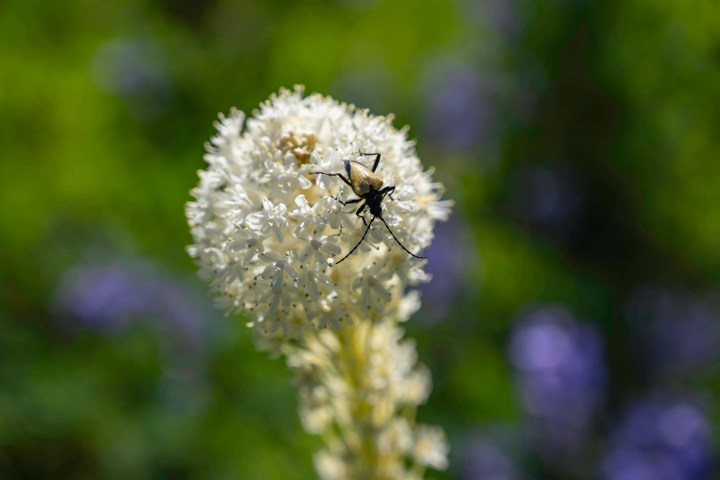
The Android and Apple app stores are full of apps for every conceivable purpose, except a good app with which to identify plants and animals offline using the camera. If you’re looking for help identifying edible plants, you’re better off with an e-book.
Seek by iNaturalist is the closest I came to quick and easy digital plant ID, but I found it to be very spotty in its accuracy. What works best is Google Lens, which can identify almost anything (plant, animal, rock, etc.) with eerie reliability. It’s an incredible tool that I use all the time, and I’ve even used it to identify edible plants without being hideously poisoned. Unfortunately, it only works with a strong internet connection, so it’s not suitable for many remote areas.
Other helpful apps
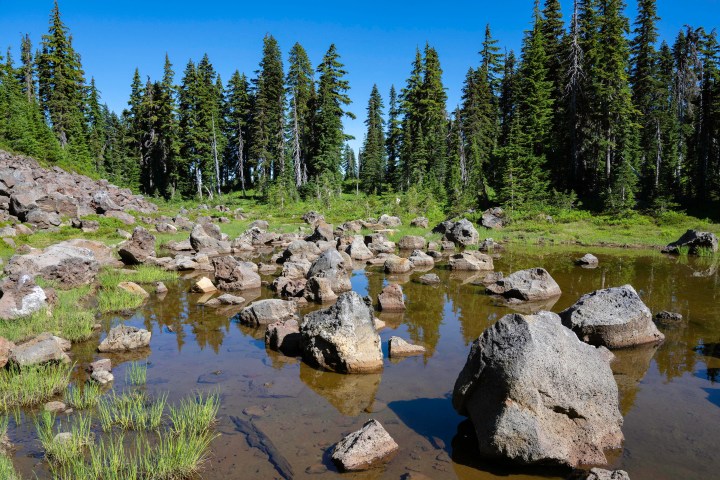
I highly recommend downloading Survival Manual, which is basically a giant Wiki with a treasure trove of survival, first aid, and general information for the outdoors. It’s incredibly useful and could potentially be lif-saving in emergency situations. Use it for reference in the field and to help guide you in preparation for your trip.
Flyover Country is another free app, this one intended for pilots and passengers of aircraft who want to know what they’re seeing down below. The geological maps built into it also make it a great resource for identifying the ground under your feet when you’re out hiking. It’s a bit confusing to start out, but with a bit of digging, you can get it to show a great, interactive geologic map.
If you’re headed to the coast, you should definitely install Tides Near Me, which will give you an accurate forecast of current and upcoming tides. It’s one of the most frequently used apps on my phone.
A quick word on music etiquette
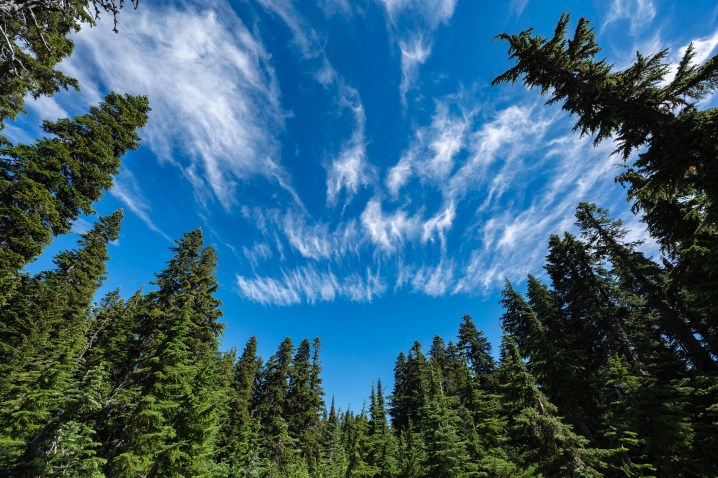
On my last afternoon camping beside the shores of the lake, a group camped opposite of me turned on a small speaker playing rock music. I love rock music, I even play rock music, but not in the backcountry.
Here’s where I draw the line on tech in the wilderness. No music should be played out loud ever, at any volume, when venturing into natural areas. Wild places have a music all their own, composed by the weather and the shape of the land, and performed by wind, water, and a billion living things.
Talk as you would in a church, and do not pollute the endless and infinite symphony of nature with the blasphemy of pop tunes played on a Bluetooth speaker. If you’re scared to be alone with your own thoughts, use earbuds. There’s no shame in plugging into your phone to listen to a few songs before you tuck in for the night, though the singing of the crickets and the soughing of an alpine breeze is far sweeter than any music I’ve yet to hear.
Making tech and the outdoors come together

Gadgets and apps offer immense functionality in the wilderness, but they are subject to human error. The devices and applications I carried with me into the backcountry worked without a hitch, but my own mistakes led to a couple of major blunders. Considering the fallibility of electronics and their operators, it’s not a good idea to rely on them completely. Always carry a paper map, and read the instruction manuals for your devices thoroughly. I also recommend doing a test run of all your equipment at home just to work out any kinks while you’re still able to troubleshoot them.
Some people will still swear by experiencing the great outdoors without any technological interference, but for most folks, I think the right tools can actually enhance your experience. Just don’t get too sucked into your tech and forget why you went outside in the first place.



